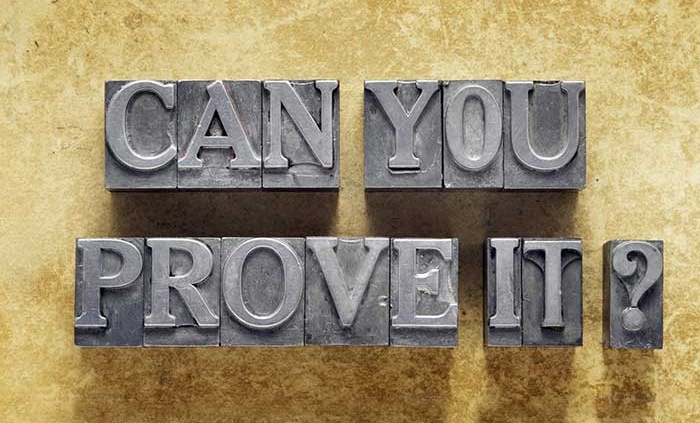Proof Points: The Way to Prove Your Brand’s Great
We do a fair amount of brand work in the B2B / tech sector, and we’re privileged to work with business leaders who make remarkable products that advance the world. It’s our job to not only convey those contributions, but to prove them: to bring out those elements of their brand story that substantiate and make their brand credible.
How do we do this?
In this piece, we’re going to focus on brand “proof points” and how to build your brand’s credibility. This is important. If you convey something extraordinary about your brand – but have no proof behind your messaging – well, talk is cheap. It won’t take long for people to start doubting your claims and for your brand to start losing credibility. And customers don’t buy from brands they don’t trust.
What are Proof Points?
A proof point is an example or an aspect of your brand that offers irrefutable evidence of the quality, importance or uniqueness of something. Proof points need to be accurate, convincing and believable. They are the foundation for your brand and the reason why you can claim powerful brand benefits.
Here are some examples:
- Tide promises to get clothes their cleanest – how? Because Tide is formulated with full strength color-safe bleach.
- Dominos stands for “hot pizza in 30 minutes” – why can it make this claim? Because they guarantee your order within 30 minutes or your money back.
- Rolex makes some of the best watches in the world – why? Because every watch is made from 904L steel, which is corrosion-resistant and more beautiful than other steels, but more expensive and difficult to work with.
- SalesForce is *the* leader in Customer Relationship Management – why is this true? Because they help businesses realize an average 43% increase in lead rate conversion.
- Microsoft’s mission is to empower every person and organization in the world to achieve more – in December 2020 they had 115 million users of their Teams product.
- Accenture promises to “help our clients create their future” – and they do so with their team of 300+ analysts and researchers around the world who work directly with Harvard Business School and MIT to drive innovation and thought leadership.
Proof points are the justification for your brand promise, your brand mission and vision and your benefits, which we talked at length about in this piece. Proof points help substantiate the benefits and promise your brand makes to the world and are a critical part of your brand story.
Your Brand’s Proof Points
So how to discover your brand’s proof points? As we said earlier, a proof point is evidence that supports a claim of value that you make about your product, service or company. Proof points can be formulated in many ways, including:
- A set of statistics that shows your product’s impact (see SalesForce’s example, above)
- A guarantee, warranty or other brand promise that backs up your benefit;
- Case studies and/or testimonials from customers
- Quotes from a trusted or credible source
- Written or video validation from third parties (blogs, interviews, )
- Awards and certifications from third parties (industry associations, rankings)
- References or referrals from third parties (business associates, customers, friends),
Sometimes business leaders don’t have evidence of performance; I can understand this. A leader’s focus is on driving innovation, the team and the business forward – not necessarily getting customer feedback. But this aspect is vital because it allows you to talk to the impact your offering has on customers. If you can say, “our offering reduces your cost by 30%,” a quantifiable metric that shows this is true will help your next customer realize they really will save 30%.
Design Your Credibility Drivers
As a leader, you should be able to identify your proof points pretty easily. What is it about your business that gives you that edge over your competition? Look at your business from an external perspective. Is there a strategic angle that you have? For example, Accenture touts its research and analysts as a way to prove its commitment to innovation and thought leadership.
As well, spend some time going through your best customers’ feedback. If you don’t have this, we highly recommend sending out a survey with open-ended questions to gather customer opinion and feedback. Then look for patterns: does everyone talk about cost savings – and if so, how much do they save with you? Does everyone rank your customer service high? If yes, can you quantify this? What other aspects of your business do your customers love?
Start documenting and charting this feedback. SalesForce has an astonishing 300+ customer case studies on its website, but once long ago, they only had 1 case study. The trick was: they documented it and slowly built their credibility.
If you need help discussing your proof points and how you might substantiate your brand promise and benefits, reach out to us; we’re always here to help make your brand magnetic to success.



